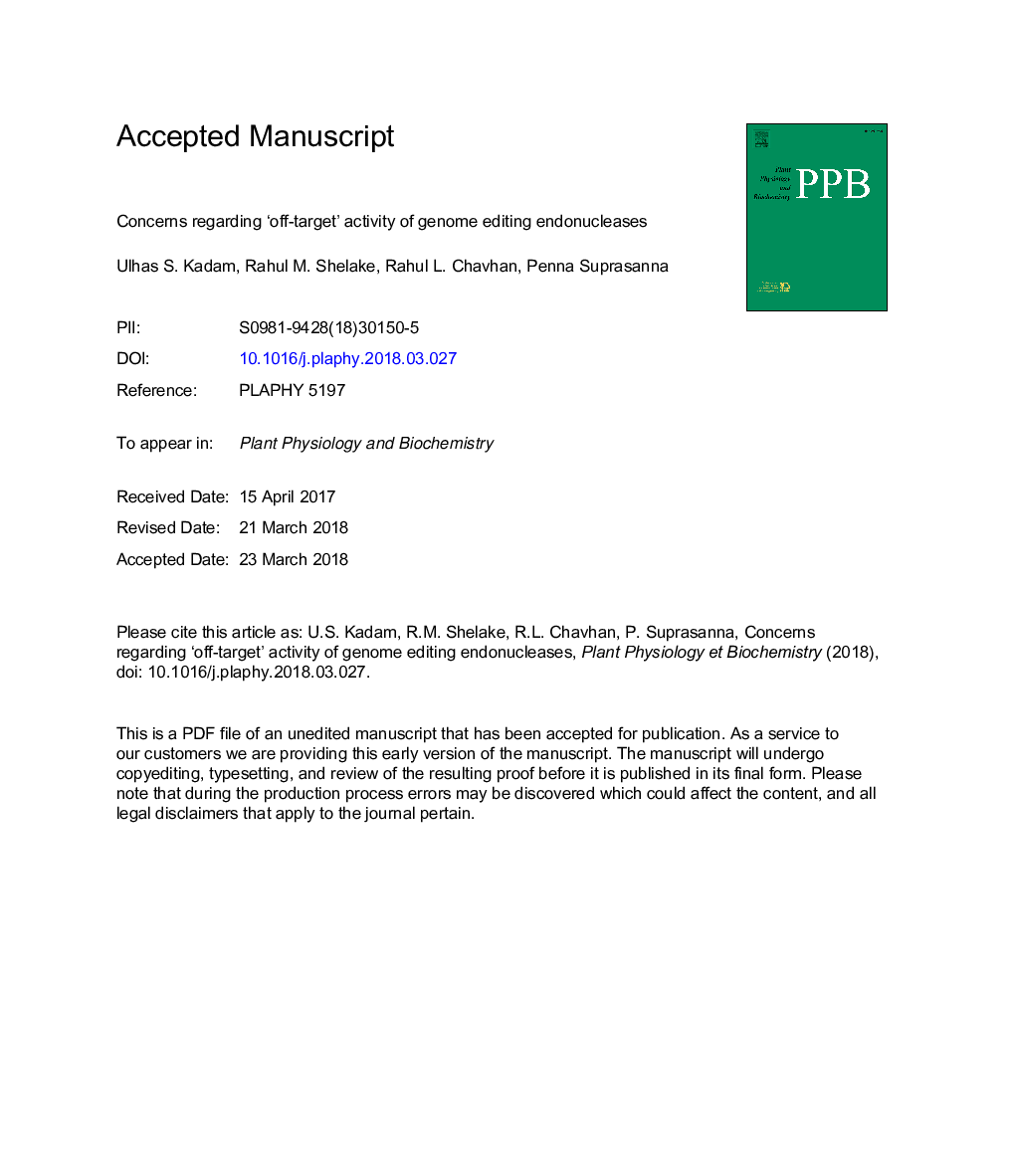| Article ID | Journal | Published Year | Pages | File Type |
|---|---|---|---|---|
| 8956061 | Plant Physiology and Biochemistry | 2018 | 35 Pages |
Abstract
Genome editing (GE) tools ensure targeted mutagenesis and sequence-specific modification in plants using a wide resource of customized endonucleases; namely, zinc-finger nucleases (ZFNs), and transcription activator-like effector nucleases (TALENs), and the CRISPR (clustered regularly interspaced short palindromic repeats)/Cas (CRISPR-associated protein) system. Among these, in recent times CRISPR/Cas9 has been widely used in functional genomics and plant genetic modification. A significant concern in the application of GE tools is the occurrence of 'off-target' activity and induced mutations, which may impede functional analysis and gene activity studies. Moreover, the 'off-target' activity results in either not reported or unknown, difficult to detect, produce non-quantifiable cellular signaling and physiological effects. In the past few years, several experimental methods have been developed to identify undesired mutations and to curtail 'off-target' cleavage. Improvement in target specificity and minimizing 'off-target' activity will offer better applications of GE technology in plant biology and crop improvement.
Keywords
Related Topics
Life Sciences
Agricultural and Biological Sciences
Plant Science
Authors
Ulhas Sopanrao Kadam, Rahul Mahadev Shelake, Rahul L. Chavhan, Penna Suprasanna,
